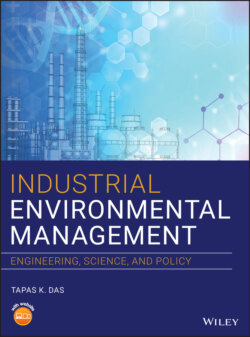Читать книгу Industrial Environmental Management - Tapas K. Das - Страница 142
2.13.7 Emerging Environmental Challenges
ОглавлениеIndia's economic development propelled by rapid industrial growth and urbanization is causing severe environmental problems that have local, regional, and global significance. Deforestation, soil erosion, water pollution, and land degradation continue to worsen and are hindering economic development in rural India, while the rapid industrialization and urbanization in India's booming metropolizes are straining the limits of municipal services and causing serious environmental problems.
More than 20 cities in India have populations of over one million, and some of them, including New Delhi, Mumbai, Chennai, and Kolkata, are among the world's most polluted. Assuming continued economic liberalization and increased urbanization, the damage to environment and health could be enormous if precautionary measures are not taken. The challenge, therefore, is to maintain the quality of air, water, and land and protect the environment by reconciling environmental, social, and economic imperatives.
Air quality data in India's major cities indicate that ambient levels of air pollutants exceed both the World Health Organization and Indian standards, particularly for particulate matter. Of the total air pollution load nationwide, vehicular sources contribute 64%, thermal power plants 16%, industries 13%, and the domestic sector 7%. Environmental effects from growing fossil fuel use can only worsen as India seeks to meet the energy needs of its growing economy. It is estimated that over 96% of India's total demand for commercial energy is met by fossil fuel with coal contributing 60% and petroleum products providing the remaining 36%.
India's rivers and streams suffer from high levels of pollution from waste generated primarily from industrial processes and municipal activities. Untreated sewage and nonindustrial wastes account for four times as much pollution as industrial effluents. While it is estimated that 75% of the wastewater generated is from municipal sources, industrial waste from large‐ and medium‐sized plants contributes to over 50% of the total pollution loads. In major cities, less than 5% of the total waste is collected and less than 25% of this treated.
To address these environmental challenges in coordination with the state governments, the central government has identified and targeted 17 highly polluting industries and 24 environmental problem areas. The chemical and engineering industries are at the top of the government's list since they are the major contributors to air, water, and waste pollution. These industries include integrated iron and steel plants, nonferrous metallurgical units, pharmaceutical and petrochemical complexes, fertilizers and pesticide plants, thermal power plants, textiles, pulp and paper, tanneries, and chloralkali units.
The Government of India has established an environmental legal and institutional system to meet these challenges within the overall framework of India's development agenda and international principles and norms. Recently, the Government put forward the National Environment Policy which provides a guide to action in regulatory reform, environmental conservation, and enactment of legislation by government agencies at all levels.
